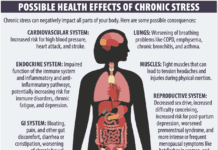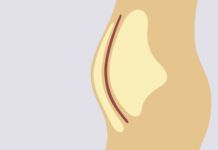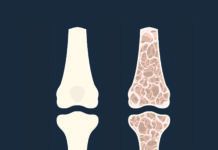Fad diets for weight loss have been around for centuries and they don’t seem to be going away. Many recommend restricting one or more healthy foods like fruits, vegetables, whole grains, or legumes. They may not be safe for all individuals and can be challenging to follow long term. We reviewed a few of today’s popular diet plans for their safety and efficacy:
Whole30: Whole30 promotes itself as an opportunity to learn about foods that may negatively impact how one looks, feels, and performs. It promises to eliminate cravings, exhaustion, bloating, and a variety of chronic symptoms, while promoting deeper sleep, boundless energy, smoother digestion, and a healthier relationship with food. Whole30 is an elimination diet that promise to identify food sensitivities and develop a personalized, sustainable, long-term diet plan.
The Whole30 program consists of 30 days of elimination followed by at least 10 days of reintroduction. During the 30 days of elimination, individuals are encouraged to eat whole foods, such as meat, seafood, eggs, vegetables, fruit, and healthy fats. They are asked to avoid added sugar, alcohol, grains, legumes (green beans and peas are allowed), and dairy. The program also restricts food products made with carrageenan or sulfites, both of which are prevalent in processed and ultraprocessed foods. Individuals are instructed not to weigh themselves, take body measurements, or recreate baked goods or treats with approved foods.
For the reintroduction phase, which can last for a minimum of 10 days, the program suggests bringing back one food group at a time and paying attention to one’s energy, sleep, mood, cravings, and digestion. The goal after reintroduction is to apply what was learned to develop an individualized “Food Freedom” plan for the long term. According to Whole30, the intent of Food Freedom is feeling in control of the food you eat, instead of food controlling you.
Is it Effective? Whole30 is not designed as a weight loss diet. It bills itself as a way to improve your diet quality and find out if any foods impact how you feel. Independent research on the Whole30 program is lacking.
“Any program that eliminates foods such as sugars, grains, and alcohol is likely to result in short-term weight loss,” says Sai Das, PhD, senior scientist at the HNRCA and professor at the Friedman School. A 2010 survey by the company reported 96 percent of the more than 1,600 participants surveyed lost an average of six to 15 pounds following the protocol. There is no data on how long it took to lose this weight or whether the weight loss was maintained. There is potential for regain of any weight lost during the elimination phase once foods are reintroduced. “Once the restrictive elimination period is complete,” says Das, “the reintroduction phase should not be perceived as an opportunity to binge and overdo the previously restricted foods.”
Is it Safe? Nutrition experts caution against any plans that eliminate food groups, especially those that are fiber and nutrient rich, such as whole grains and legumes. When following a restrictive diet for any significant length of time, it is possible to develop nutritional inadequacies. While the Whole30 elimination phase is not meant to be followed long term, this doesn’t mean it’s safe for everyone, such as people who have type 2 diabetes. Elimination protocols are standard practice to diagnose food sensitives, but it is important to work with a physician or Registered Dietitian Nutritionist (RDN or RD) when following any restrictive diet or elimination plan to ensure an overall healthy dietary pattern.
The Zone Diet: The Zone Diet (not to be confused with “Blue Zones,” discussed below) claims to control weight, increase physical and mental energy, and slow down aging “simply and easily.” It was developed almost 30 years ago, claiming to reduce diet-induced inflammation, and is designed as a life-long program. According to The Zone Diet website, “The Zone” is a physiological state in which three clinical markers are within a specific range: triglyceride, HDL (good) cholesterol and HbA1c levels. The website claims that being in The Zone will result in loss of excess body fat, extended maintenance of wellness, better performance, and faster thinking.
The Zone Diet is a low-carbohydrate diet, like the more recent Ketogenic and Paleo diets (for more information on how these diets stack up, see ‘The Great Diet Debate’ in our January 2021 issue). It involves getting 30 percent of calories from lean protein, 40 percent from carbohydrate, and 30 percent from healthy fat at every meal and snack. The plan suggests minimizing grains and starches (zero to one servings per day) and getting carbohydrate from mostly vegetables (eight servings per day) and some fruits (two servings per day). Protein should come from fish, poultry, lean beef, egg whites, or low-fat dairy. Fats should be unsaturated, from sources like olive oil, avocado, and nuts.
Is it Effective? Low-carbohydrate diets are common strategies for weight loss; however, research findings on their effectiveness is mixed. When comparing low carb and low fat diets, many trials have reported negligible differences between the two and only modest weight loss after 12 months. A trial compared the effect of four different diets, including The Zone Diet, on weight loss and heart disease risk factors. The results indicated while all diets led to weight loss and improvements in some risk factors, The Zone Diet was no better than the others.
It is important to note that low-carbohydrate diets can either be healthy or unhealthy, depending on what foods are included and excluded. “While some studies may show weight loss when following a low-carbohydrate diet, the findings may be attributable to other factors, such as overall calorie restriction or reduction in highly processed foods,” says Das. More recent research suggests that overall diet quality, rather than quantity of calories from fat or carbohydrates, is more important for weight loss and long-term health. Whether it’s The Zone Diet or another diet plan, a focus on more vegetables and whole foods, and less added sugar and refined grains, is crucial.
Is it Safe? Like many low carb diets, The Zone Diet tends to be higher in protein and fat than the typical American diet. While the ratios of protein, fat, and carbohydrate are within the ranges recommended by the National Academy of Medicine, the diet may not be safe for individuals with such disorders as reduced kidney function, high LDL cholesterol, or type 2 diabetes due to the high proportion of total protein and/or animal fats from meat and dairy products. The Zone Diet is low in whole grains and legumes, which are rich sources of fiber. As with any diet plan, it is important to consult a physician or RDN/RD prior to starting.
Blue Zones Diet: The founder of the Blue Zones Diet, Dan Buettner, and his team traveled the world in search of communities where people were living the longest and enjoying a high quality of life in their old age. After studying the dietary habits of nine communities he termed “blue zones”, Buettner reported that the successful aging is likely due to overall lifestyle, not just diet. The dietary patterns in all five regions had three key things in common: they are mostly plant-based, include a moderate intake of wine, and individuals stop eating when they are no more than 80 percent full.

The five regions of the world with the longest-living populations have dietary and other lifestyle factors in common.
From these observations, he developed the Blue Zones Food Guidelines, which include eating mostly plants (vegetables, fruits, legumes, grains); consuming at least a half-cup of cooked beans per day; choosing whole grains over refined; only consuming meat on special occasions, if at all; consuming three ounces of fish up to three times per week; and only choosing unsweetened beverages, such as tea, coffee, and water (aside from daily wine). The guidelines also suggest snacking on nuts, eating no more than three eggs per week, and minimizing dairy product intake. Sugary drinks, salty snacks, packaged sweets, and processed meats are not advised.
Is it Effective? Research on the impact of the Blue Zone dietary pattern on weight loss, disease risk, or longevity is limited. It is true that plant-based diets like the one advocated by the Blue Zone diet have been linked to lower risk of cardiometabolic disorders, such as heart disease and type 2 diabetes. However, while these longest-living communities had dietary factors in common, these commonalities may not have been the only thing responsible for their longevity. “It’s also important to remember that the Blue Zones share more than just dietary factors,” says Das. “They share other lifestyle factors, such as movement, social connection, and stress management strategies, all of which can contribute to positive health outcomes and increased longevity.”
Is it Safe? The Blue Zones Diet is not like other fad diets that commonly require eliminating foods or food groups. Since it is a plant-based diet, it is good for the environment as well as health. The diet does suggest limiting dairy, which is a source of protein, calcium, vitamin D, phosphorus, and potassium. These are important nutrients, especially for children, pregnant and lactating women, and older adults, so it’s important to get those nutrients from other sources if following the Blue Zones Diet.
➧ Be Realistic. Many fad diets are restrictive and difficult to sustain within the context of your lifestyle.
➧ Think Permanent Change. Choose a dietary pattern that is healthy and becomes a permanent way of eating, not a short-term fix.
➧ Consult with a Professional. Before starting any diet plan, consult with a physician or Registered Dietitian Nutritionist (RDN or RD) for fact-based guidance.
It’s difficult to analyze the effect of nutrients, foods, diets, and dietary patterns such as these popular programs on health outcomes such as weight loss and chronic disease risk. We do know, however, that dietary patterns that include more fruits, vegetables, legumes, whole grains, nuts, seafood, fat free or low-fat dairy, and unsaturated fats from foods like plant oils in place of refined grains, processed foods, added sugar, and saturated fat from meats and full-fat dairy products are consistently associated with favorable health outcomes.
























